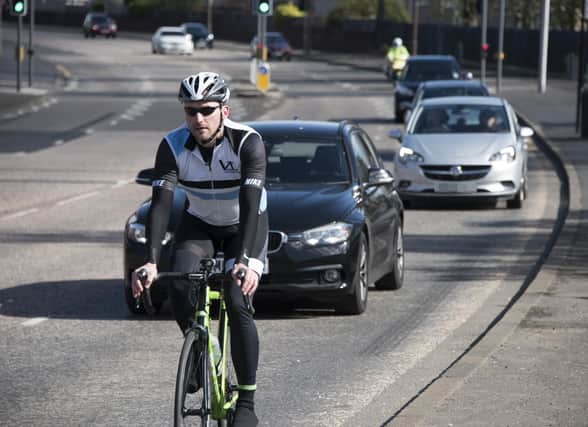Still more sleepless nights for cyclists - Roz Boynton


It makes for pretty dry reading (even for a Cycle Law Scotland solicitor who specialises in representing cyclists injured in road accidents) and so this report has largely gone under the radar in terms of public attention.
However, at first blush, the 2020 figures are impressive; 35 per cent fewer casualties and 14 per cent less deaths on Scottish roads compared to the previous year.
Advertisement
Hide AdAdvertisement
Hide AdWith a year of lockdowns and working from home, we could expect less traffic on the roads and therefore a reduction in incidents - but with Transport Scotland estimating that motor traffic volume in Scotland dropped by 23 per cent throughout 2020 and with casualty numbers dropping even more, this is surely great news for Scotland?
It was also the year of the graph; with daily Covid news briefings analysing trends, disseminating figures and trying to predict the future, I think the population is better-placed than ever to analyse the trends and indeed I’m compelled to start looking into the figures.
I’m a keen cyclist myself and I’ll admit that road safety is an issue that’s personal to me; I see too many injured cyclists on a daily basis. It can sometimes overwhelm my thoughts when I’m riding my bike. I have been known to wake up at night with a jolt, having dreamt about a cycling accident, despite having never been involved in one myself… yet.
So, I try to reassure myself by looking at the published numbers – is cycling getting safer for me and my clients? There are a few key points that aren’t mentioned in the provisional figures released that make for some more sleepless nights and busy workdays for me.
Despite an overall downward trend in fatalities and serious injuries generally, there has been an increase in the number of cyclists killed or seriously injured in Scotland. Eight cyclists died in Scotland in 2019 and that increased to 11 deaths in 2020. For cyclists seriously injured in Scotland, this increased from 178 in 2019 to 242 in 2020.
So, whilst overall Transport Scotland can say there were 35 per cent fewer casualties on Scottish roads, there were actually more cyclists killed and seriously injured than the previous year.
And what about the numbers not included in the figures? The Transport Scotland report only includes the incidents reported to the police. Too often, in cases I have dealt with, incidents involving cyclists have not been reported to the police and if they have been, the police have recorded no injuries, when, in fact, there have been serious injuries sustained.
These incidents are not included in the figures and so I can only assume the true number of incidents involving cyclists is actually more.
Advertisement
Hide AdAdvertisement
Hide AdThe Scottish Government has also recently published an updated version of Scotland’s Road Safety Framework. The headline is that the government has set itself a bold target to reduce the number of people killed and seriously injured on Scotland’s roads by 50 per cent by the year 2030.
The Framework sets out how the Government intends to achieve this targeting the five pillars of the Safe System; safe speeds, safe road use, safe vehicles, safe roads and post-crash response.
Recognising the climate change emergency and importance of active travel, the government expects more people will choose to cycle, walk or use e-scooters over the next decade and there is a commitment to invest £500 million over the next five years for large scale active travel infrastructure projects.
One has to hope that with it being clear that cyclists are among the most vulnerable of road users, that the investment is made wisely.
Just last week we supported Police Scotland at a Road Safety event targeting all road users and highlighting distancing, visibility and road positioning. Whilst well planned and implemented infrastructure is key, we also need to get better at understanding the vulnerability of some road users and ensure that we look out for them and give them the space they need on the roads.
Roz Boynton is an Associate Solicitor, Cycle Law Scotland